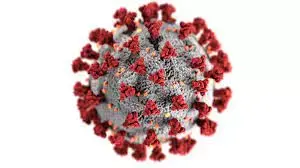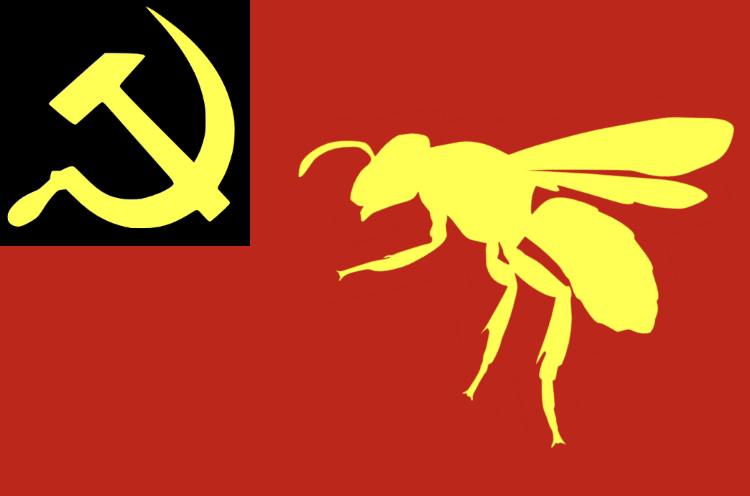Colbert contracted Covid earlier this week and started off by hosting a show at home – much like he did during the pandemic. However, the CBS show was pulled yesterday and has also been pulled for the rest of the week.
Covid was also responsible for the cancellation of Strike Force 3 – Colbert, Jimmy Fallon and Jimmy Kimmel’s live show that was set to take place in Las Vegas last month before Kimmel contracted Covid.
Colbert himself had to pause production on The Late Show last year after testing positive in April and a recurrence in May.
Totally normal and sustainable society, I definitely see no negative repercussions from this trajectory. BUT, for totally unrelated reasons I would love if we had a database of when celebrities get covid just so I don't have to continue wondering when rich people with much better healthcare than me drop dead of strokes and heart attacks years earlier than normal.
btw Physics Girl is still recovering from Long Covid and all her youtube friends are still out there not masking. :yea:
From the comments:
lol this guy spent two years calling normal people crazy because he was afraid of contracting the illness he’s now joking about. seriously, who watches this buffoon?
Reminder that libs and leftists alike, on the "back to normal" train, enable this shit.
You'd think high profile infections like this would raise a certain degree of awareness and perhaps even get Libs back on the pro-mask train. Instead, all I seem to see is a bunch of people stubbornly insisting they won't do anything to protect themselves because nobody else is doing it. Pure herd
mortalitymentality.I think the vaccine blunted the urgency to a significant degree. Once folks got their second shot, unmasking felt much safer and easier. And now that COVID is functionally out of the news, people just don't want to revisit it anymore.
Covid was also responsible for the cancellation of Strike Force 3 – Colbert, Jimmy Fallon and Jimmy Kimmel’s live show that was set to take place in Las Vegas last month before Kimmel contracted Covid.
That's one COVID casualty I definitely won't be crying over.
Once folks got their second shot, unmasking felt much safer and easier
People are convinced that masks don't work, not just the fringe right, but mainstream libs too. The only reason libs ever cared, at least in america, is because a republican was in office. We will never take meaningful action again when the next big thing hits. Covid could mutate tomorrow into the deadliest thing ever seen and libs\chuds will keep spitting in each others faces til they die.
Part of the reason masks don’t work for liberals is because they have to take it down every five seconds.
How else could they possibly eat brunch? Are you suggesting their masks need brunch holes?
We will never take meaningful action again when the next big thing hits.
We'll take action, but only if it means unleashing the police on undesirables.
He's 59 and Kimmel 55 so they've got to be in some complication risk brackets by now but as media people I guess they are also expected to serve as prime examples of the 'back to normal' attitude because CDC says 'we have the tools now'.
The podcaster Leslie Lee III also got long covid and it took him out of everything for like a year, and he's still not back to normal I think.
And I know which one.
Cymothoa exigua, or the tongue-eating louse, is a parasitic isopod. It enters a fish through the gills. The female attaches to the tongue, while the male attaches to the gill arches beneath and behind the female. The parasite severs the blood vessels in the fish's tongue, causing the tongue to fall off. It then attaches itself to the remaining stub of tongue and the parasite itself effectively serves as the fish's new "tongue".
And it's even better if it can be taught to tell jokes.
Ooh that's a good one. Are you familiar with Sacculina carcini?
CW: parasitic castration
spoiler
That's another good one.
How about the large blue butterfly and its relationship to ants? In its larva stage it might simply eat them or it has a sort of brood parasite relationship.
Like many members of the genus Phengaris, large blues are brood parasites, relying on another insect to raise their young. In this case, the hosts are species of Myrmica ant. By being physically and chemically similar to Myrmica ants in their larval stage, and possibly by using other forms of mimicry, Phengaris caterpillars trick the ants into taking them back to the ant nest.
Once there, the caterpillar will either become a predator of the ant larvae, or beg for food by acting like an ant larva in what is known as a "cuckoo" strategy. The "cuckoo" method is viewed as a more successful strategy, as studies have consistently found more larvae per nest for cuckoo butterfly species than predator butterflies. Through much research, it has been well documented that large blue butterflies act as predators in the host nests.
Ooh I didn't know about that one, that's super cool, thanks!
Another cool one is Schistosoma mansoni
Quoting from Parasite Rex, chapter 2, by Carl Zimmer:
CW: Parasite romance and sex, inside of a human
spoiler
After one hundred fifty years of experiments, parasitologists can show just how extraordinary they are. Consider the blood fluke Schistosoma mansoni, a tiny missile just emerged from its snail and swimming through a pond in search of a human ankle. If it feels the ultraviolet rays of the sun, it stops swimming and sinks back down into the darkness to hide from the damaging radiation. But if it senses molecules from human skin, it begins to swim madly, jerking around in different directions. When it reaches the skin, it drills its way in. Human skin is far tougher than the soft flesh of a snail, so the fluke lets its long tail snap off, the wound quickly healing as it burrows in. Special chemicals it releases from its coat soften up the skin, letting it plunge into its host like a worm in mud.
After a few hours it has reached a capillary. It has traded the streams of the outside world for the internal ones. These capillaries are barely wider than the fluke itself, so the fluke needs to use a pair of suckers to inch forward. It makes its way to a larger vein, and a larger one still, finally making its way into a torrent of blood so powerful it carries the fluke away. The parasite rides the surge until it finally reaches the lungs. It moves from the veins to the arteries like a snake in a forest canopy. Finding its way back into a lung capillary, and then to a major artery, it is swept through the body once again. It may tour its host’s entire body three times until it finally comes to rest in the liver.
Here the fluke lodges itself in a vessel and finally has its first meal since leaving the snail: a drop of blood. It now begins to mature. If it’s a female, a uterus starts to take shape. If it’s a male, eight testes form like a bunch of grapes. In either case, the fluke grows dozens of times bigger in a few weeks. Now it is time for the parasite to search for a partner for life. If it is lucky, other flukes sniffed out this human host and are lodged in the liver as well. The females are delicate and slender; the males are shaped something like a canoe. They begin to make blood-borne odors that lure members of the opposite sex, and once a female encounters a male, she slips into his spiny trough. There she locks in, and the male carries her out of the liver. Over the course of a couple of weeks, the pair make the long journey from the liver to the veins that fan out across the gut. As they travel the male passes molecules into the female’s body that tell her genes to make her sexually mature. They keep traveling until they reach a resting place unique to their own species. Schistosoma mansoni stops near the large intestine. If we were following Schistosoma haemotobium, it would take another route to the bladder. If we were following Schistosoma nasale, a blood fluke of cows, it would take yet another route to the nose.
Once they find their destined place, the fluke couple stay there for the rest of their lives. The male drinks blood with his powerful throat and massages the female to help thousands of blood cells flow into her mouth and through her gut; he consumes his own weight in glucose every five hours and passes on most of it to her. They may be the most monogamous couples in the animal kingdom—a male will clasp onto its female even after she has died. (A few homosexual flukes will also get together. While their fit isn’t as tight, they will keep reuniting if a disapproving scientist should separate them.)
Heterosexual flukes mate every day of their long lives, and whenever the female is ready to lay her eggs, the male makes his way along the wall of the bowels until he finds a good spot. The female slides partially out of the trough, far enough to lay her eggs in the smallest capillaries. Some of the eggs are carried away by the bloodstream and end up back in the liver, that meaty filter, where they lodge and inflame the tissue, causing much of the agony of schistosomiasis. But the rest of the eggs work their way into the intestines and escape their host, ready to slice open their shells and find a new snail.
Edited to add:
Cw: Personification of parasite
spoiler
(In song):
Surfin' the waves
It's what I do
In my little
Blood canoe
I didn't know that one. Nice - so to speak.
How about this one? It's a wasp that manipulates caterpillar into serving as bodyguards.
Glyptapanteles is a genus of endoparasitoid wasps found in all continents, except Antarctica. The larvae of Glyptapanteles species are able to manipulate their hosts into serving as bodyguards.
Another...
Polysphincta gutfreundi is a wasp that manipulates spiders. The link I have is 13 years old but Wikipedia doesn't have anything about it and google isn't being helpful.
Drugged spiders' web spinning may hold keys to understanding animal behavior | Smithsonian Insider
My quotes are short because this stuff I bookmarked to "read later". And as is my custom "later" hasn't come (yet).
I'm seeing it pop up around me and it's generally stressful just on merit of staying ahead on bills and the fact that I wanna be at every protest/praxis thing I can.








